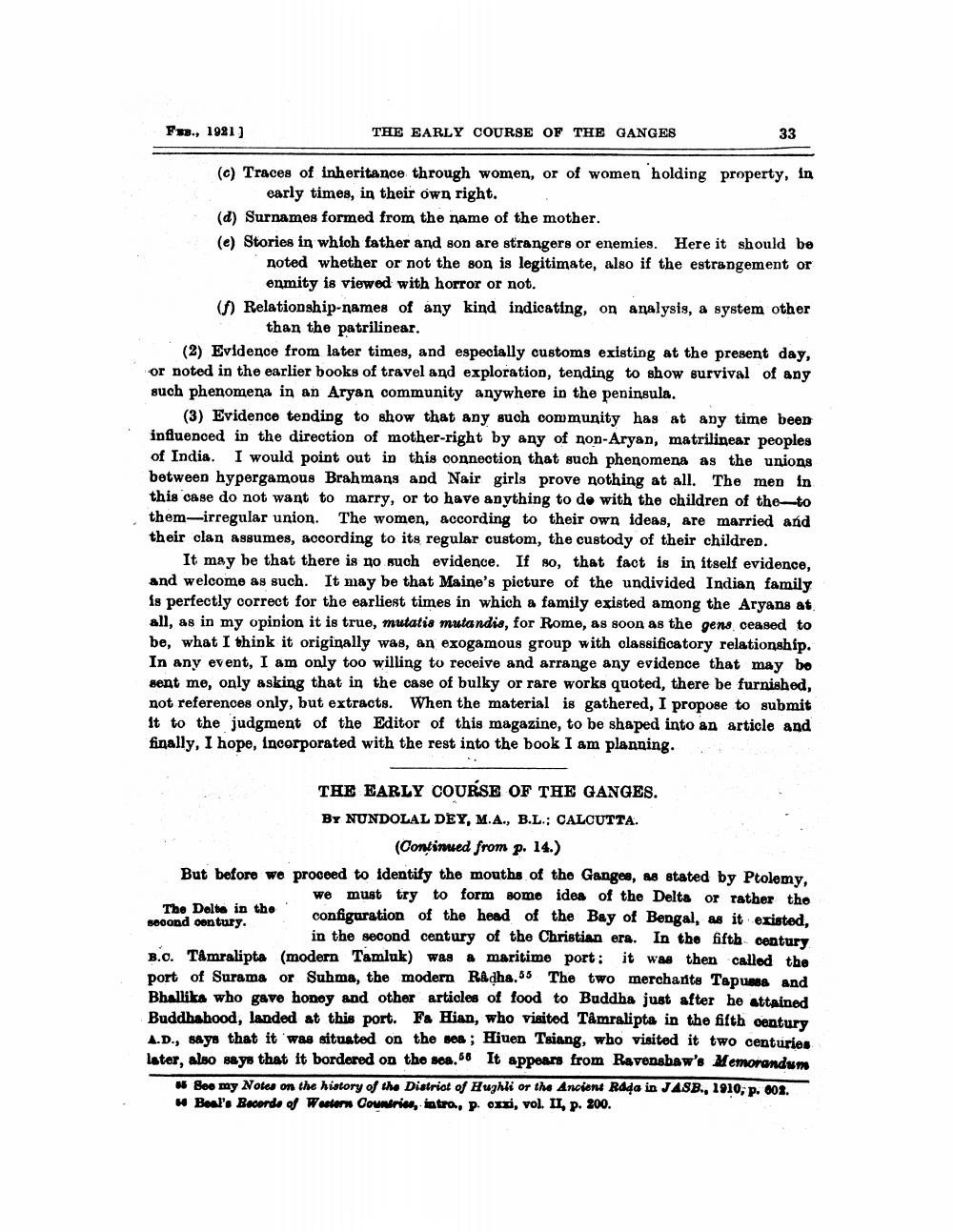________________
Fus., 1921)
THE EARLY COURSE OF THE GANGES
(c) Traces of inheritance through women, or of women holding property, in
early times, in their own right. (d) Surnames formed from the name of the mother. (e) Stories in which father and son are strangers or enemies. Here it should be
noted whether or not the son is legitimate, also if the estrangement or
enmity is viewed with horror or not. ) Relationship-names of any kind indicating, on analysis, a system other
than the patrilinear. (2) Evidence from later times, and especially customs existing at the present day, or noted in the earlier books of travel and exploration, tending to show survival of any such phenomena in an Aryan community anywhere in the peninsula.
(3) Evidence tending to show that any such community has at any time been influenced in the direction of mother-right by any of non-Aryan, matrilinear peoples of India. I would point out in this connection that such phenomena as the unions between hypergamous Brahmang and Nair girls prove nothing at all. The men in this case do not want to marry, or to have anything to do with the children of the-to them-irregular union. The women, according to their own ideas, are married and their clan assumes, according to its regular custom, the custody of their children.
It may be that there is no such evidence. If so, that fact is in itself evidence, and welcome as such. It may be that Maine's picture of the undivided Indian family is perfectly correct for the earliest times in which a family existed among the Aryans at all, as in my opinion it is true, mutatis mutandis, for Rome, as soon as the gens ceased to be. what I think it originally was, an exogamous group with classificatory relationship. In any event, I am only too willing to receive and arrange any evidence that may be Hent me, only asking that in the case of bulky or rare works quoted, there be furnished, not references only, but extracts. When the material is gathered, I propose to submit 1t to the judgment of the Editor of this magazine, to be shaped into an article and finally, I hope, incorporated with the rest into the book I am planning.
THE EARLY COURSE OF THE GANGES. BY NUNDOLAL DEY, M.A., B.L.; CALCUTTA.
(Continued from p. 14.) But before we proceed to identify the mouths of the Ganges, as stated by Ptolemy,
we must try to form somo idea of the Delts or rather tho Tbo Delte in the configuration of the head of the Bay of Bengal, as it existed, second century.
in the second century of the Christian era. In the fifth century BO. TAmralipta (modern Tamluk) was & maritime port: it was then callod the port of Surama or Suhma, the modern Radha.55 The two merchants Tapuess and Bhallika who gave honey and other articles of food to Buddha just after he attained Buddbahood, landed at this port. Fa Hian, who visited Tamralipta in the fifth oentury A.D., says that it was situated on the nea; Hiuen Tsiang, who visited it two centuries later, also says that it bordered on the sea.66 It appears from Ravensbaw's Memorandum
# 8oo my Notes on the history of the District of Hughli or the Ancient Rada in JASB., 1910, p. 601. w Boul's Becords of Western Countries, intra, p. cxx, vol. II, p. 200.




